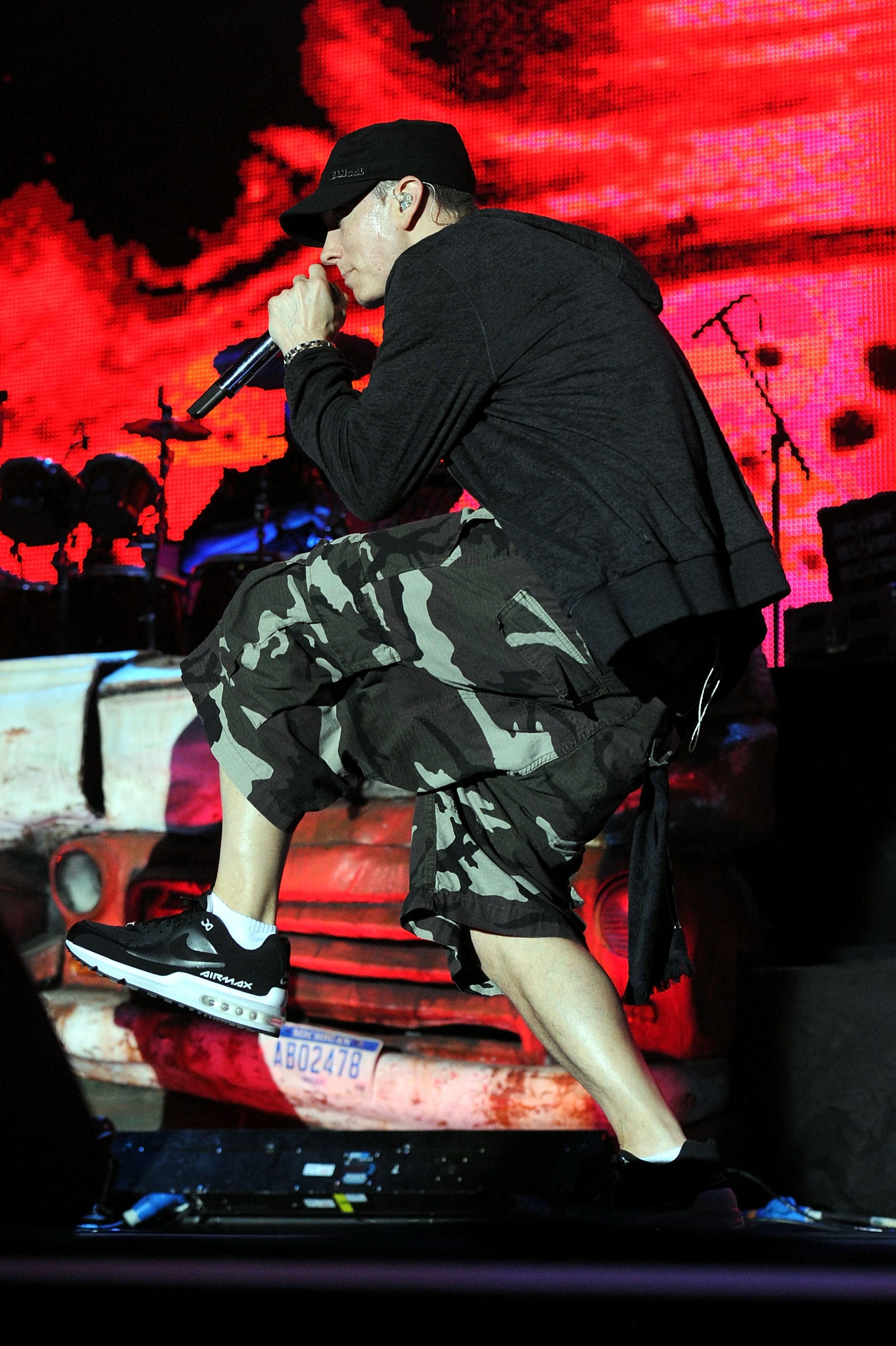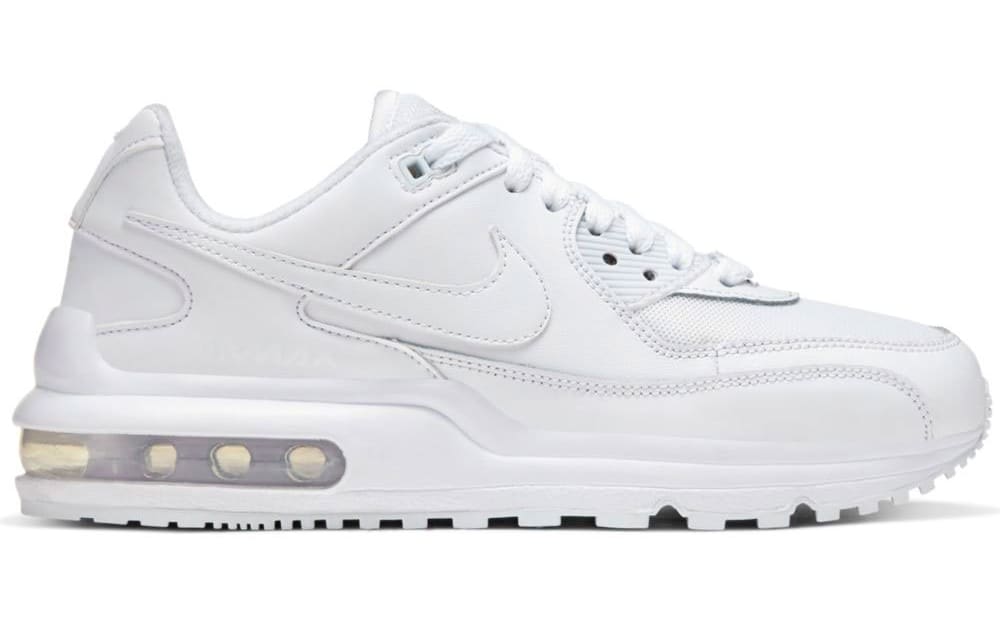Air Max Day 2020: Why the Nike Air Max Wright Is the Real Air Max MVP
Written by SOURCE on March 26, 2020
Today, the sneaker world celebrates Nike’s self-created holiday, Air Max Day, for the seventh straight year. Since 2014, Nike has used March 26 to put a larger focus on all things Air Max. This year, the brand has narrowed its focus to the Air Max 90 for its 30th anniversary. In the weeks leading up to it, Nike has released a handful of OG-esque colorways. Today, a new color scheme fusing 2013’s “Duck Camo” Atmos collab with Infrared panels nodding to the original arrives. The brand new Air Max 2090 silhouette also pulls inspiration from the retro runner. The positioning of the spotlight is very clear, but there is one sneaker from Nike’s history—also inspired by the Air Max 90—that the brand will not be giving recognition to today: the Air Max Wright.
Yes, that Air Max Wright. Most of you probably know the silhouette. Even if you don’t know it by name, the “runner” was a mainstay on the shelves of big box mall retailers like Foot Locker and Champs Sports for the better part of the 2000s. Suburban high school hallways were filled with them. Dads trying to save a few dollars on some new shoes to beat up bought them. If you aren’t a sneaker nerd, you likely don’t even know the difference. It has the bubble, so it’s like all the other Air Maxes, right? While this $100 budget sneaker has never been put on the same pedestal as other legacy models like the 90, 95, or 97, it is certainly very important for other reasons, especially to the casual consumer who just wanted a fresh pair of Nikes, but wasn’t willing to spend the $120 to $140 that an Air Max 90 usually costs.
“I probably sold more Air Max Wrights than I did Air Force 1s,” says Matt Leslie, a former Champs Sports manager who worked at various stores within the Foot Locker umbrella in Pittsburgh and New Jersey from 2006 to 2019. “I started out in a smaller store. We didn’t even have Air Max 1s or Air Max 90s. We always had Wrights. Literally a 12-year-old up to a 60-year-old would buy them.”
While most sneakerheads would scoff at the idea of owning the Wright, which was essentially a knock-off 90 that lacks the story and historical context of other models in the Air Max archive, it was certainly a serviceable price point sneaker. Debuting around 2006, it featured a visible Air Max unit under the heel in similar fashion to the AM90. It also sported an identical leather mud guard and plastic eyelets to the source material. The execution was comparable to that of the Air Max LTD, another budget-friendly low-top that rotated in and out of big box stores in various colorways throughout the 2000s.
“Nike has always really worked hard at taking a shoe that’s popular up-market, and finding a way to create more down-market components for it,” says NDP Group senior industry advisor Matt Powell. “The limited release shoes are by their very nature limited in terms of their financial impact. I think [commercial shoes] is where the business is. I am not at all saying these limited edition shoes have no validity at all. They just are not a significant contributor to sales and profits.”
Despite its relatively bland reputation, the Wright does have one singular moment of pop culture relevancy. From about 2010 to 2013, it was a go-to sneaker for Eminem. From covers of XXL to concert stages, the rap legend frequently laced up white, black, and grey versions. He even wore pairs on the cover art for his single “Rap God” and Bad Meets Evil album with Royce Da 5’9”. In a 2017 episode of Sneaker Shopping he said, “There’s something about the bubble I always liked. Maybe it’s mental, but it adds comfort.” Despite his documented history with the model, we unfortunately were never given an Eminem x Air Max Wright project to see how it would have fared in the marketplace.

The Wright was never a shoe people camped for, nor was it difficult to buy. If you strolled into a Foot Locker on any day of the week, it was there in multiple colorways for $100. Leslie says it sold even more when it would go on sale for $79.99, especially in the suburban malls. Older customers would even come in and buy three or four all-black pairs for work.
“It was an easy sale. It was definitely a shoe that I fell back on,” Leslie says. “When I got my first store I was like, ‘Instead of trying to get an [Air Jordan] retro, which was basically impossible in this store that I was in, get me eight different colors of Air Max Wright.’ It was definitely our bread and butter.”
Nike and Foot Locker declined to comment on the Wright for this story.

Ray Cruz, the current operations manager at Stadium Goods who managed Foot Lockers throughout the tri-state area from 2007 to 2014, echoes a similar sentiment about the Wright. He referred to it as the “dad version of the Air Max 90,” and says the all-white version was particularly difficult to keep in stock in the Staten Island and New Jersey markets. Suburban kids not in tune with sneaker culture would buy them in different colors for back-to-school season.
“If someone wanted an Air Force 1 and we didn’t have it, we went to the back and you grabbed that white Air Max Wright,” says Cruz. “They were a mainstay on the sneaker wall. We’d get 36 to 48 pairs in a shipment. If you didn’t know what [the Wright] takes inspiration from, you might think it was a dope shoe.”
While the Air Max Wright likely won’t be getting the retro treatment or a celebrity-endorsed collaboration any time soon, it deserves recognition for the impact it’s had in the sneaker world.
“It was definitely one of the moneymakers for the Air Max line,” Cruz says. “It’s almost like an unsung hero.”




